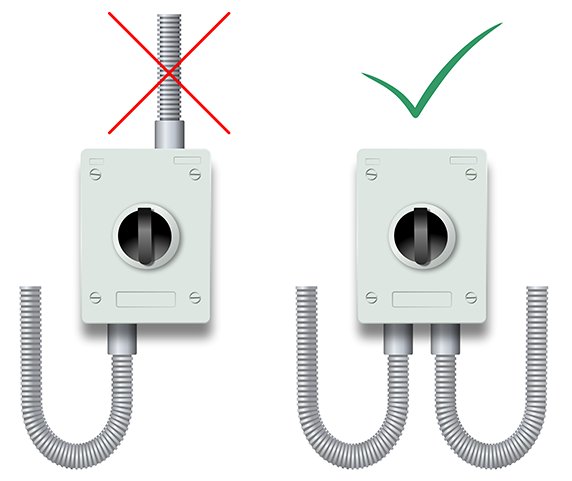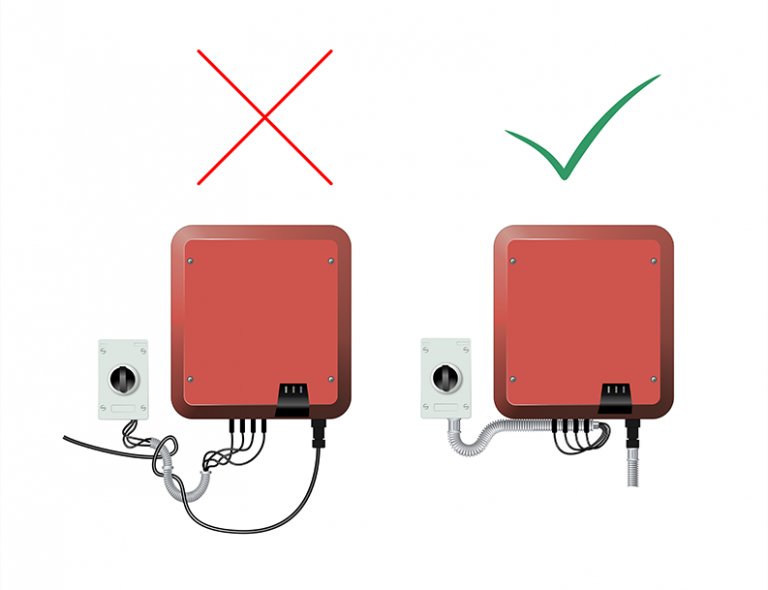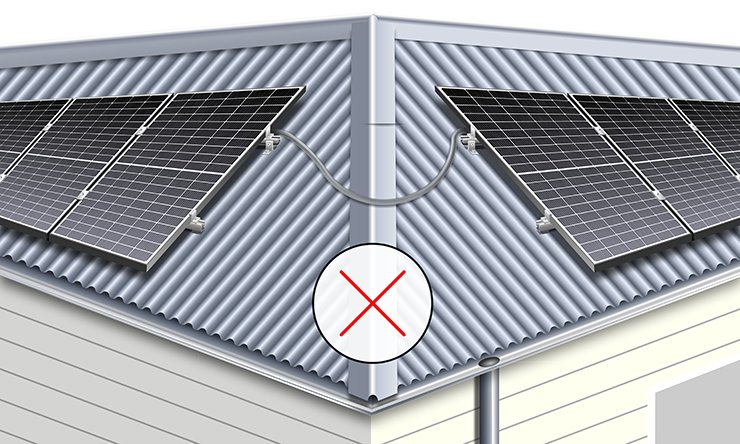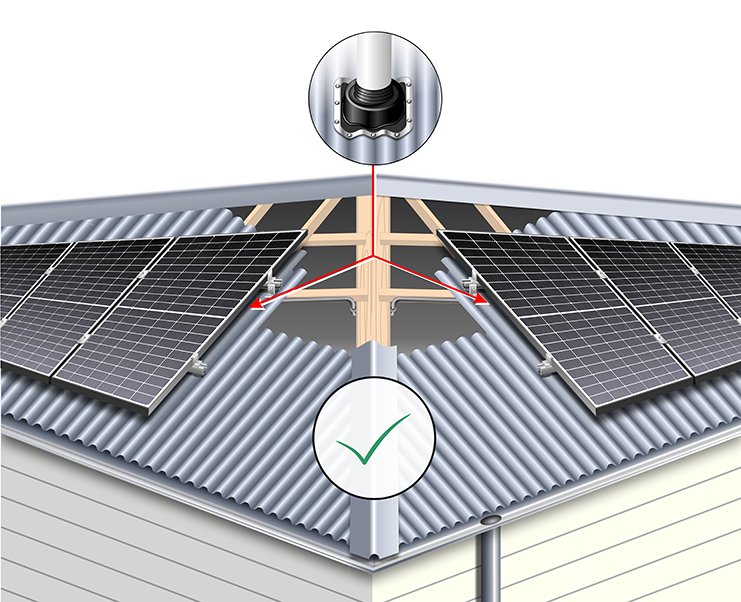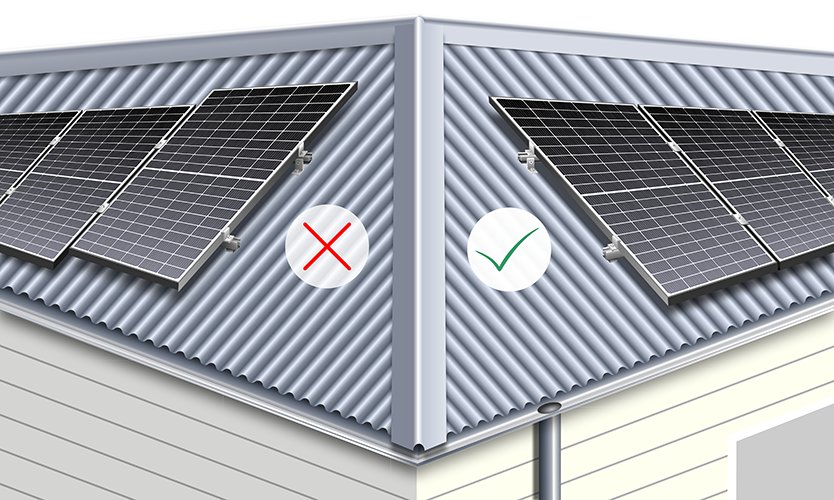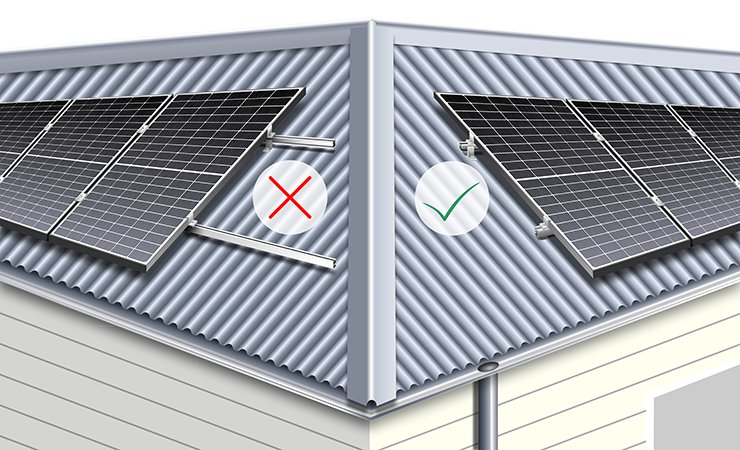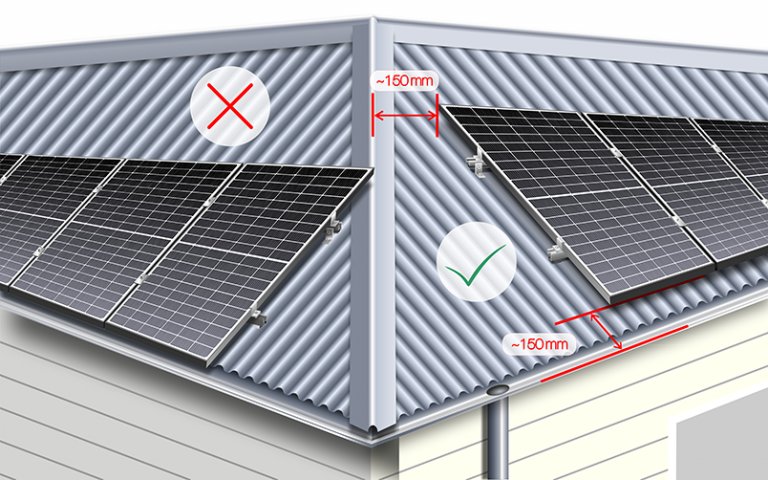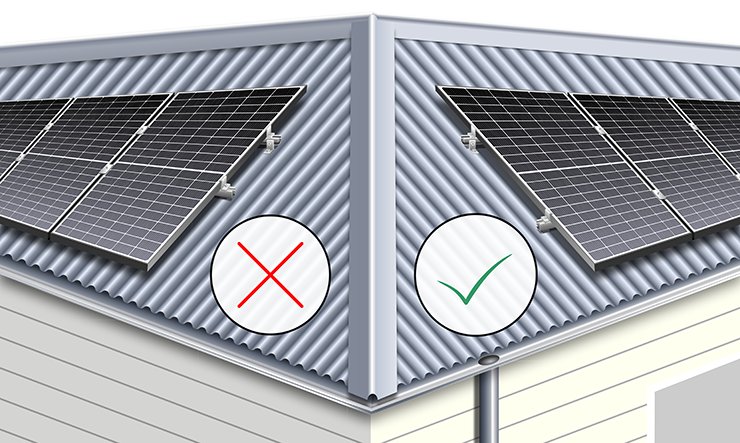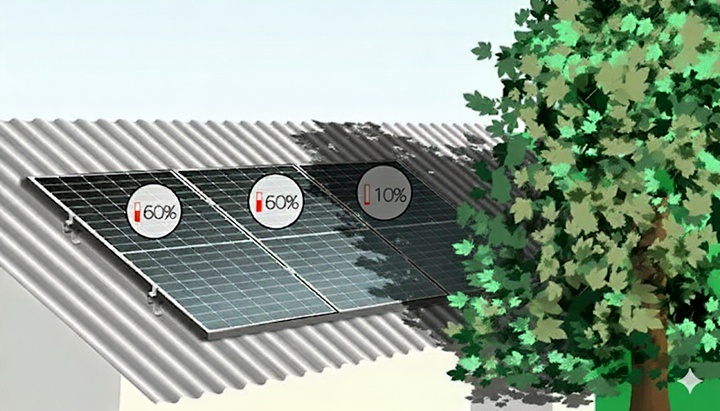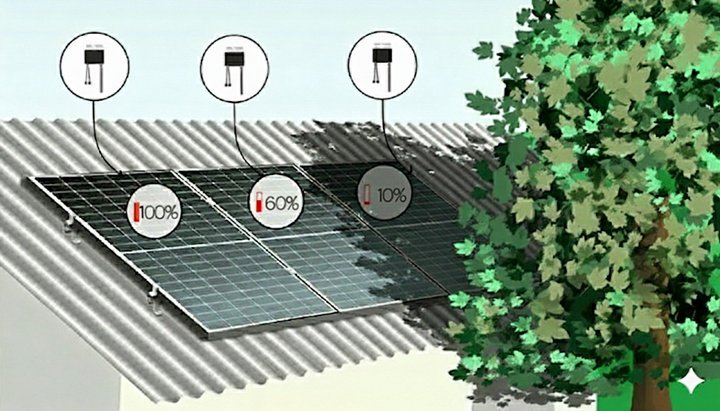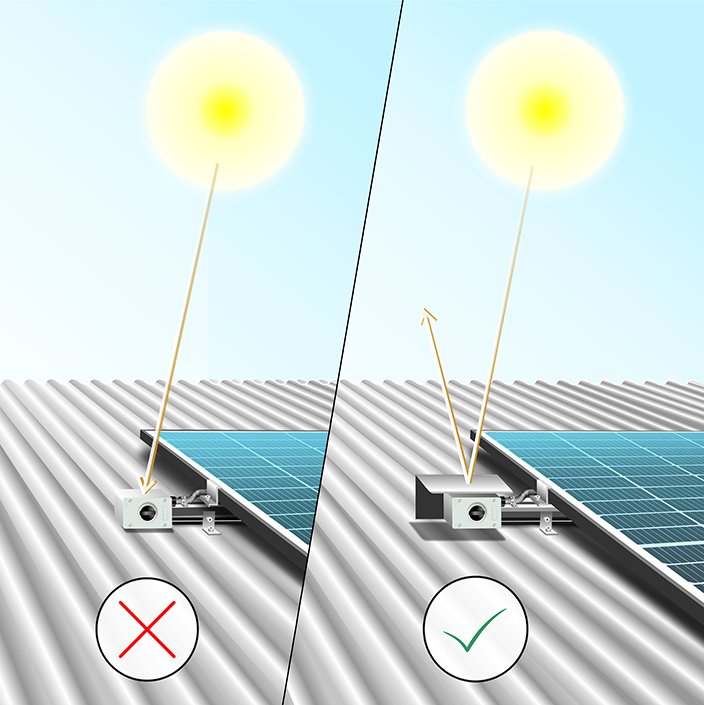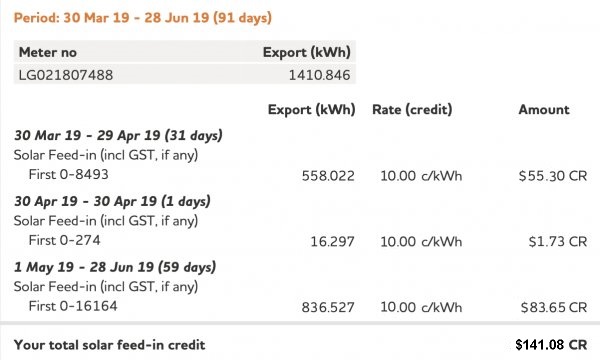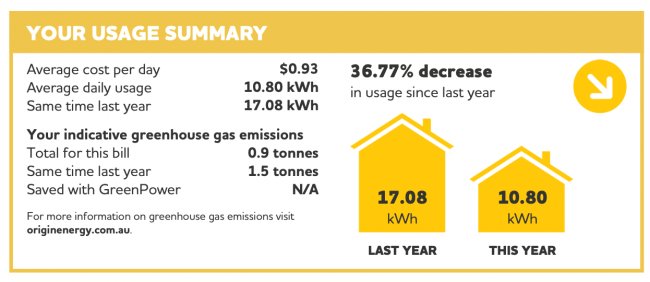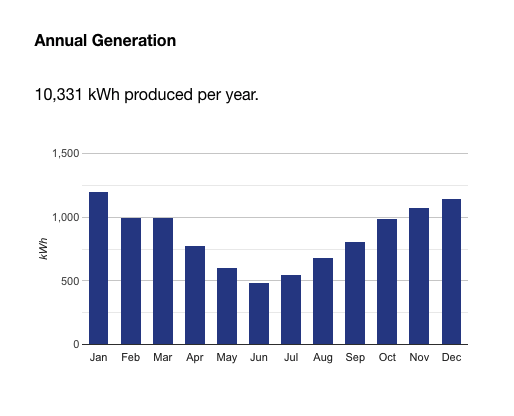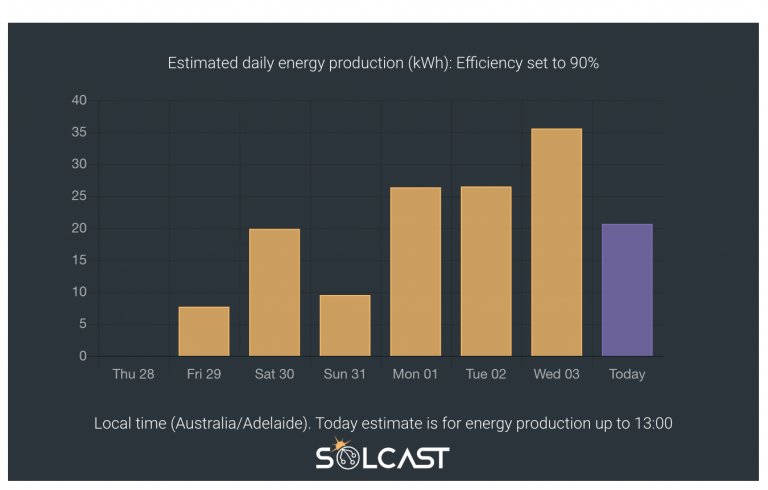Solar 101, Part 3 – Owning Solar
By Finn Peacock – Chartered Electrical Engineer, Ex-CSIRO, Founder of SolarQuotes.com.au
Last Updated: 12th Sep 2025
The third (and final) part of my ‘Solar 101’ series brings us to this: Your solar system is now installed on your roof. What next?
My advice is to bookmark this page, so you can refer to it over the years to come and keep your system in tip-top shape.
Let’s get to it!
- Your installer has finished up and waved goodbye – what now?
- Waiting, waiting, waiting for a meter
- Unlocking the true savings of solar – shifting your loads
- Sanity check – have your bills gone down since solar has been installed?
- Monitoring system performance – focus on energy (kWh) not power (kW)!
- Put away the soap and water – why cleaning panels isn’t (usually) worth it.
- What kind of maintenance do solar systems need?
- Beyond solar – things to consider
Email: [email protected]
Tel: 08 7200 0177
Snail Mail: 3/39 Grenfell St, Adelaide, SA 5000 Australia
1) Your installer has finished up and waved goodbye – what now?
It’s the end of the day, and the installers have tidied up, packed their things, and left. What can you do, right now, to check the install?
Here are the major things that you can check on your installation with a quick walk around your property:
On your wall
- Your solar inverter
Is it mounted in a location that doesn’t get direct sunlight?
A couple of hours of sunlight is fine – especially if it’s less-harsh morning sunlight. But if the solar inverter is in the sun for most of the day, ask your installer to put a simple shade over it.
- DC/AC isolators (if used)
Does the conduit enter the isolators from the top or the bottom?
If the conduit enters from the top, you’ll need to get your installer to come back and fix them.
Pro-tip: Exterior isolators that have top-entry are asking to get waterlogged!
For the cabling around the inverter.
Does the cabling look tight and tidy? Loose wiring is asking to get snagged on something as people walk past (and looks terrible!)
On your roof
Assuming you can see your installation from your yard, and without having to climb up on the roof:
Is there any exposed flexible conduit running across the roof between solar panel arrays? The sun will degrade the exposed conduit over time and open you up to safety issues.
Are the solar panels aligned? If they can’t get them straight and there’s no good reason for it (like avoiding a stink pipe), I’ll bet other things aren’t right with the installation either.
Is the railing trimmed at the edges, or is it sticking out like Pinocchio’s nose?
How close are the panels to the edge of your roof? They need to be approx 150mm from the edges.
It can be hard to tell from the ground, but if they’re actually overhanging your gutter, then you’ve got a problem.
Do the ‘clamping zones’ (where the panels attach to the rail) look right? This is another one that’s hard to tell from the ground – but if your panels resemble a diving board, you’ve got a problem.
Do the panels get any shading from nearby trees, TV antennas, chimneys, flues, etc?
If they do – has your installer made you aware of the lost output? Have they used micro-inverters or optimisers that may mitigate the effects?
If your installation uses a rooftop isolator, does it have a shroud to protect it from the sun?
Documentation from the installer
You’re unlikely to remember the brands of components installed on your home or even the name of your installer, in 5+ years time.
Documentation will tell you where to turn if something hits the fan, so you can minimise the downtime.
Pro-tip: I’ve put together a comprehensive list of the documentation you should have here.
Your installer should provide this on the same day as installation, but some can take a week or so.
2) Waiting, waiting, waiting for your meter
When your solar installer has finished, they will turn your solar system on to show that it is working.
Then – they’ll shut it off again.
Wait, what?
Unfortunately, it’s unlikely that your existing meter can handle solar straight away.
It’ll need replacement or reconfiguration – which is your electricity retailer’s responsibility (or if you’re in Victoria, your DNSP’s responsibility). And they’re not known for being quick.
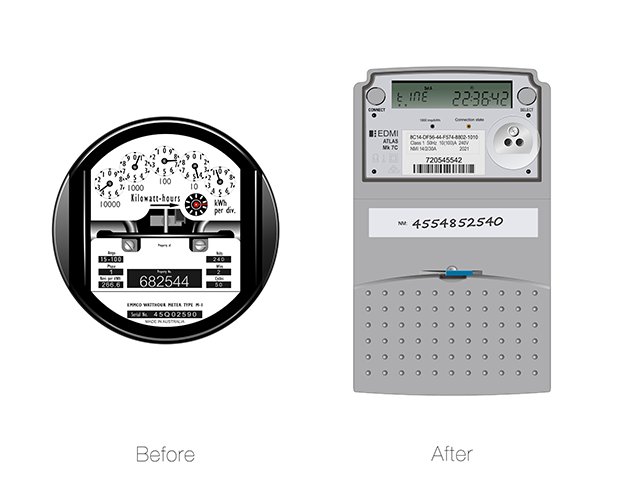
Note that digital meters come in a variety of designs – they don’t all look like the “after”
Replacement can take weeks, or even months – like for one of my employees who lives in a strata complex with a shared meter board. To prevent the delay stretching into months it’s vital not to change your retailer until after the meter is changed.
Waiting for a meter replacement can be frustrating. And it’s even more frustrating for your installer, as they want you to have a functioning solar system ASAP.
Just know that delays to the meter replacement process are out of your installer’s hands.
Pro-tip: If you want to turn your solar on anyway, we’ve written an article here about the legalities.
Costs for replacement vary from retailer to retailer and state to state. Some will replace the meter for free, some will charge a small fee, and some may slug you the full cost of the meter (around $300+).
3) Unlocking the true savings of solar – shifting your loads
As I wrote about in part 2 of this guide, self-consumed solar energy is worth anywhere from 3-16 times more than exported solar.
This is a powerful financial incentive to run your appliances during the daytime.
Consider:
- Can you run your washing machine/dishwasher while you’re at work, instead of overnight? Timers are a must.
- If your home has a lot of thermal mass, run your air conditioner during the day to make your house comfy at night.
- If you have a pool pump, you’re crazy if you’re running it overnight. Adjust it to run during the daytime only.
The bottom line is – common-sense changes to your energy habits are your golden ticket to low (or no!) electricity bills.
4) Sanity check – have your bills gone down since solar has been installed?
Every now and then, I’ll get an email or phone call from a homeowner that goes something like this:
“Hey Finn – I got solar panels installed, but my latest bill is almost the same as last year’s! What’s going on??”
If they took my advice in part 2 of this guide and bought a ‘consumption monitor’, I could answer this in two seconds flat.
It’s no coincidence that 99% of the people who ask this don’t have consumption monitoring. So, operating on that assumption:
First things first – make sure that your solar system has been operating for a full billing cycle. Use your inverter’s app to check this.
Assuming it has – check your bill for evidence of your system’s impact. You’ll be looking for solar exports (look for a “CR” on your bill) and a reduction in grid usage.
Solar exports will show up as a credit on your bill (called a feed-in tariff), and look something like this:
Your reduction in usage (thanks to solar) will look something like this:
If you’ve had a full billing cycle and can’t see any solar feed-in credits, call your energy company. One of my friend’s parents had solar for years, and didn’t realise their plan had no feed-in tariff!
If you do have credits and your usage hasn’t changed much (or has gone up!), you’re likely using more energy at night. Or – it could be that it’s winter and your system hasn’t been generating much energy.
The bottom line is – if you’re unimpressed with your first post-solar bill, give your installer a ring. They should be happy to sit down with you and explain what you can do to get electricity costs down further.
5) Monitoring system performance – focus on energy (kWh) not power (kW)!
Another email that I get all the time goes something like this:
“Hey Finn – I had a 6.6kW solar system installed 3 months ago. After monitoring it daily, I’ve noticed that the system is under-performing. My 5kW inverter has only ever hit a max of 4.8kW at any given time! Should I call my installer??”
Well – it’s actually common to not hit your inverter’s rated power output for a variety of reasons.
So, to answer the all-important question of “Is my system producing what it should?” – you need to look at energy (kWh), not power (kW).
Pro-tip: I explain the difference between power and energy here.
To compare your generation with what’s predicted, there are two tools I recommend:
1) My solar calculator
This shows the expected generation of a solar system for your location, broken down by month.
Enter your postcode, system size, and direction, and then hit ‘calculate savings’. The next page will include a section that shows expected generation:
Then, simply compare this to what your app tells you your system has generated.
2) Solcast
This nifty website shows expected daily solar generation, based on local weather conditions:
99 times out of 100, after using these tools I see the homeowner is generating what’s expected and they have nothing to worry about.
So – if your system isn’t hitting its rated power output, don’t stress. All you need to do is double-check that the energy output of your system matches what’s expected.
If it’s out by more than 10% or so – and there’s no clear explanation as to why (shading, etc) – then it’s time to call your installer.
6) Put away the soap and water – why cleaning panels isn’t (usually) worth it.
As I wrote about in part 2 of this guide, you should mount your panels with a tilt of at least 10 degrees.
Having a tilt of over 10 degrees means that your panels will self-clean in the rain. No need to get up there yourself with a bucket of soapy water – or pay someone else to!
Pro-tip: Cleaning tilted solar panels only increases their annual output by around 2%.
If you mounted the panels flat anyway, then you’ll need to have them cleaned about four times per year. Many window cleaning companies offer solar panel cleaning services as well.
If you want to brave your roof yourself – not something I encourage! – then all you need is hot soapy water to clean your panels.
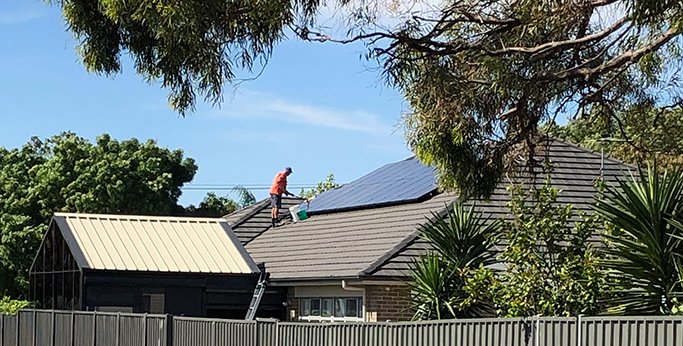
Someone I spotted cleaning panels recently – probably not worth it considering the roof tilt and lack of safety gear!
The exception to this ‘don’t bother cleaning’ advice is if you live in a particularly dirty/dusty/dry area where constant dirt/grime buildup suffocates your panels faster than the rain can wash it off.
If your system needs a clean and you want to avoid the risk of working on your rooftop, SolarQuotes can help connect you to professional solar cleaners who will do the job safely and well.
7) What kind of maintenance do solar systems need?
A crappy solar install can have many ‘weak points’ – like conduit draped over a roof – that the elements can exploit.
However, even the best installation is still exposed to the elements. This is why a SAA-accredited professional should inspect your system every five years.
It’s best if your original installer is the one who does this. If they’re no longer around, find an SAA accredited installer in your area, or SolarQuotes can help put you in touch with a trusted, accredited professional.
In some states (SA, VIC and the ACT), your network operator mandates that your system gets tested every 5 years. It’s a no-brainer to get your installer to inspect the system while they’re testing it.
Having a full inspection every 5 years will identify any potential issues to nip in the bud. It’ll also give you the peace of mind that your system will continue to operate for years to come.
8) Beyond solar – things to consider
A while ago, I surveyed my customers to find their main motivation for going solar. To no-one’s surprise, most people are in it for the savings.
But many also had a strong desire to reduce their carbon footprint. They saw solar power as an easy way to reduce their bills and decrease their footprint in one go.
Solar can make a huge impact on your electricity bills. But, it should only be part of your energy-efficiency (and thus low electricity bill) journey.
Some other things to think about in the future are:
Home energy efficiency
Gaps, glazing, and insulation are three big things that make your home more comfortable to live in. A nice bonus is they will also lower your bills, by reducing the amount of energy needed to run your home.
Pro-tip: I’ve written all about home energy efficiency measures you can take here.
Battery storage
Thanks to the federal battery rebate introduced on July 1, 2025, batteries are now a worthwhile investment for millions of Australian homes. They can pay for themselves for households with typical overnight electricity consumption in SA, WA, QLD, and NSW. They can also pay for themselves in other areas, although overnight electricity use may need to be above average.
One way to help batteries pay is to join a Virtual Power Plant (VPP). There can also be a state incentive for joining, such as the one available in NSW.
The federal battery rebate is only available if you have solar now, or get solar installed at the same time as a battery. There’s normally a cost advantage to having solar and a battery installed at the same time, it can make sense to get both at once. If you are ever faced with the choice between being able to pay for a large solar system or a smaller one with a battery, always choose the larger solar system. You can always retrofit a battery in the future, but if you have a small solar system, it reduces the benefit you get from a battery.
Electric cars
Petrol costs are a major expense for many households. That means you should put some serious thought into getting rid of them – by going all-electric.
We’re on the cusp of an electric vehicle revolution. Avoid buying a new petrol car if your current car still has a couple of years left in it.
Pro-tip: If you absolutely have to buy a new car that burns fuel, consider a ‘guaranteed’ value deal. Then, if petrol and diesel cars plummet in value in 2-5 years, as many experts predict, the car company takes the hit, not you.
Also think about whether you have enough solar to charge an electric car and battery, as well as power your home.
Wrapping up
I hope you’ve found this guide useful! If there’s anything you think I’ve missed, my contact details are:
Email:[email protected]
Tel: 08 7200 0177
Snail mail: 3/39 Grenfell St, Adelaide, SA 5000 Australia
If you’ve made it all the way through this three-part guide and still don’t have solar, SolarQuotes can help you get quotes from high-quality, trusted installers quickly and easily:
Happy Solar Power Hunting!
Finn Peacock, founder of SolarQuotes.com.au
